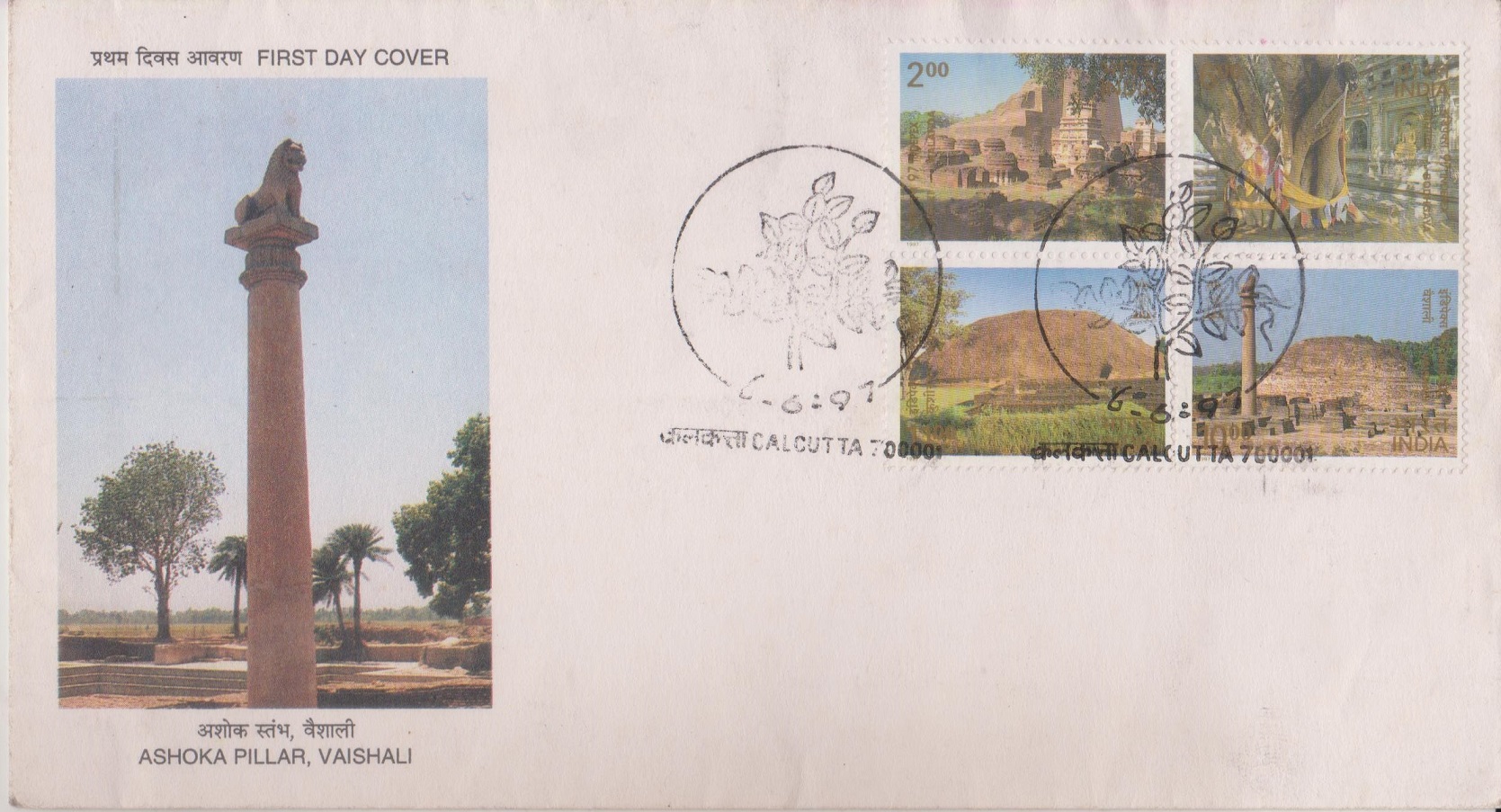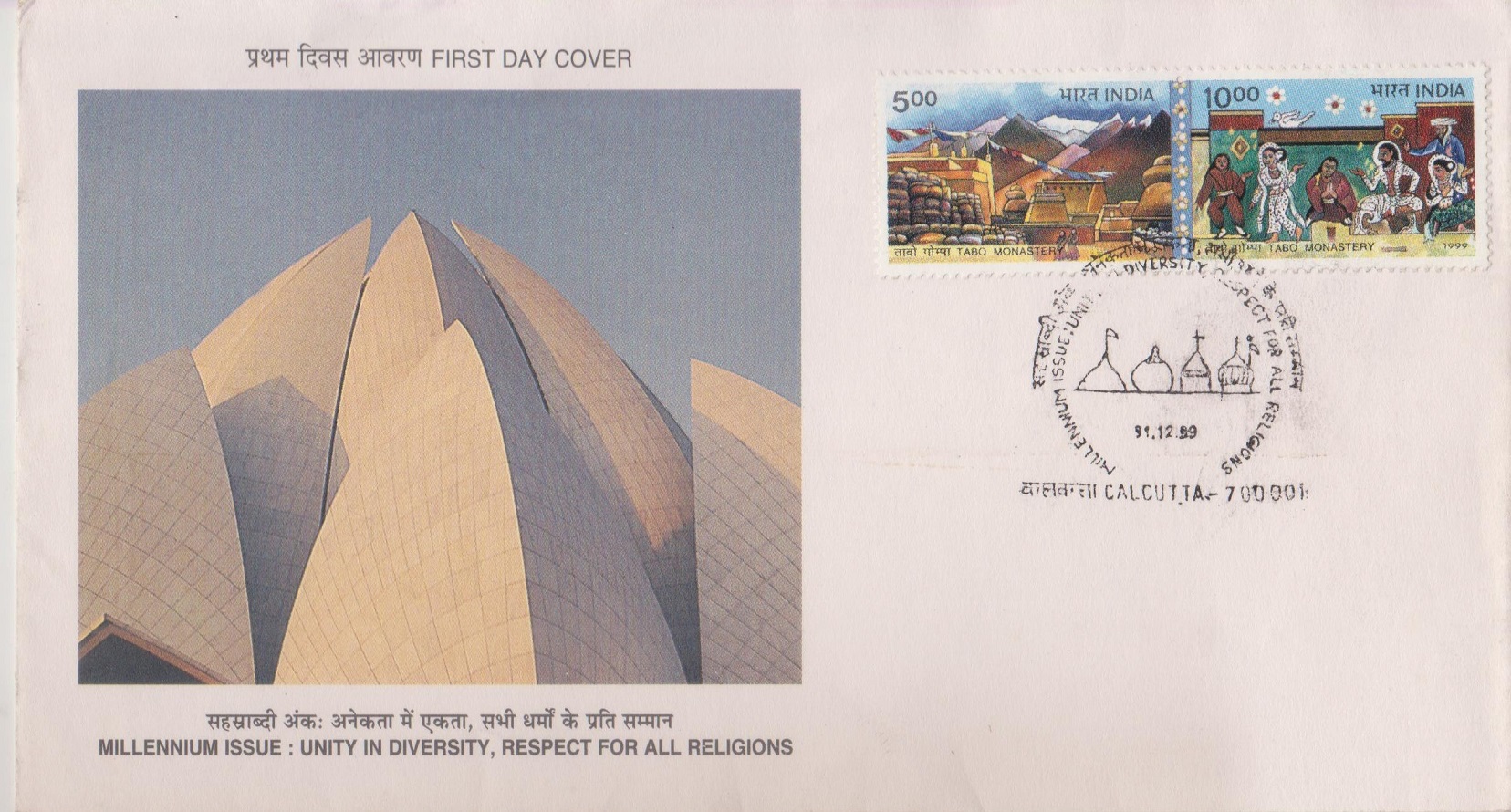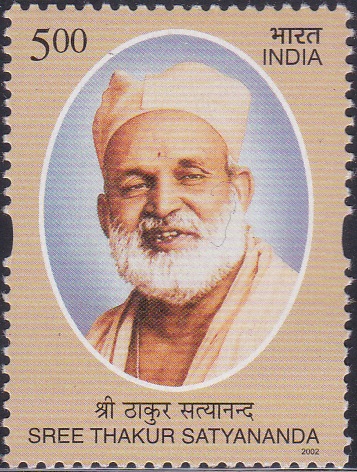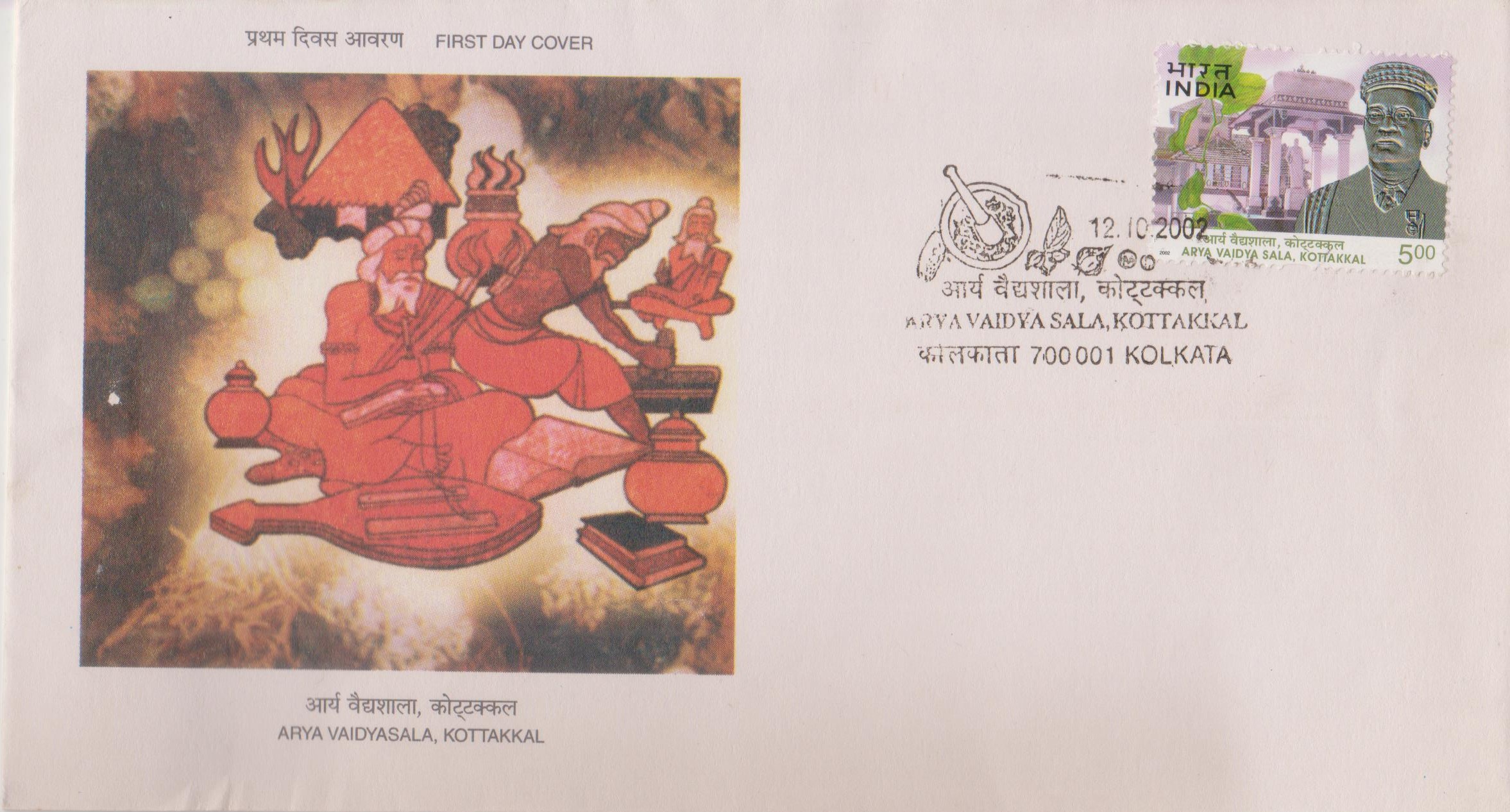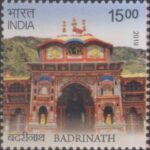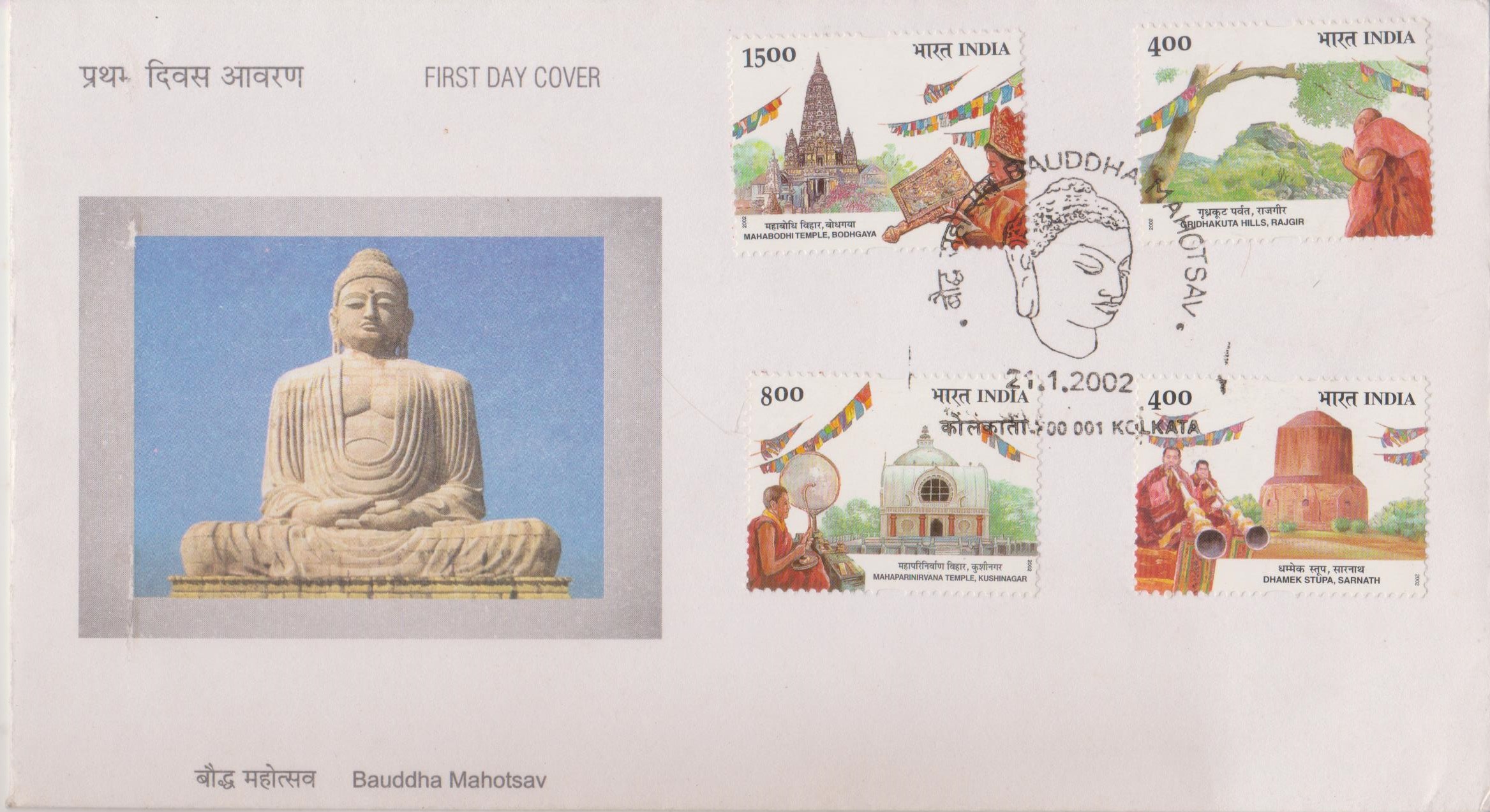
Bauddha Mahotsav
Complete Set of 4 nos. of commemorative postage stamp on the Buddha Mahotsav 2002 :
 Issued by India
Issued by India
Issued on Jan 21, 2002
Issued for : The Department of Posts is happy to issue a set of four stamps on the Bauddha Mahotsav.
Design : The first day cover carries a picture of the imposing statue of Lord Buddha at Bodhgaya. The four stamps depict important landmarks of the ‘Buddhist Circuit‘ along with illustrations of festivities.
The first stamp shows the Mahabodhi temple located adjacent to the Mahabodhi tree at Bodhgaya. This magnificent temple dating back to the second century A.D. is an amalgamation of architectural features representing many cultures. The second stamp shows the Gridhakuta hills of Rajgir, from where the Lord had delivered many of his sermons. The third stamp depicts the Dhamek Stupa of Sarnath from where Lord Buddha is believed to have given his first sermon and the fourth, the Mahaparinirvana temple of Kushinagar where he is stated to have attained release from the endless cycle of birth and rebirth. The four stamps also carry pictures of prayers and festivities, in an attempt to capture the spirit of the Bauddha Mahotsav.
Credits :
Stamp & FDC : Sankha Samanta
Cancellation : Alka Sharma
Type : First Day Cover
Colour : Four Colour
Denomination : 1500, 400, 400 & 800 Paise
Overall size : 2.90 x 3.91 Cms.
Printing size : 2.50 x 3.55 Cms.
Perforation : 13.5 x 13.5 mm with elliptical hole on each 3.91 cm sides
Paper : Matt Chromo
Stamps Printed : 1.5 million each
Number per issue sheet : 40
Printing Process : Photo Offset
Printer : Calcutta Security Printers Ltd.
About :
- Buddhism taught humanity the middle path, the virtue of observing moderation in life and staying clear of the extremes of both self-indulgence and self-mortification. It rejected ritualistic practices and emphasised the need to eliminate desire in order to attain salvation from suffering. It also advocated peace, non-violence and respect for all forms of life. Having originated in India, Buddhism spread far and wide, to different corners of the world.
- India, the ‘cradle of Buddhism‘, has a past rich with Buddhist history and traditions. The places connected with the four principal events of Lord Buddha‘s life, viz. his birth, enlightenment, first sermon and nirvana, which took place respectively at Lumbini (Nepal), Bodhgaya, Sarnath and Kushinagar, are looked upon with great veneration. Sravasti, Sankisa, Rajgir and Vaishali, together with the first four are regarded as the eight holy places (Ashtamahasthanas) and are well known pilgrimage destinations.
- The annual Bauddha Mahotsav festival aims to propagate the message of Lord Buddha and to create awareness about India‘s rich Buddhist heritage. Promoting pilgrimages and tourism as well as increasing the travel facilities are integral to this festival. The Bauddha Mahotsav also aims to strengthen the cultural links provided by Buddhism between different countries and their peoples.
- Text : Based on material received from the Ministry of Tourism, Government of India.


